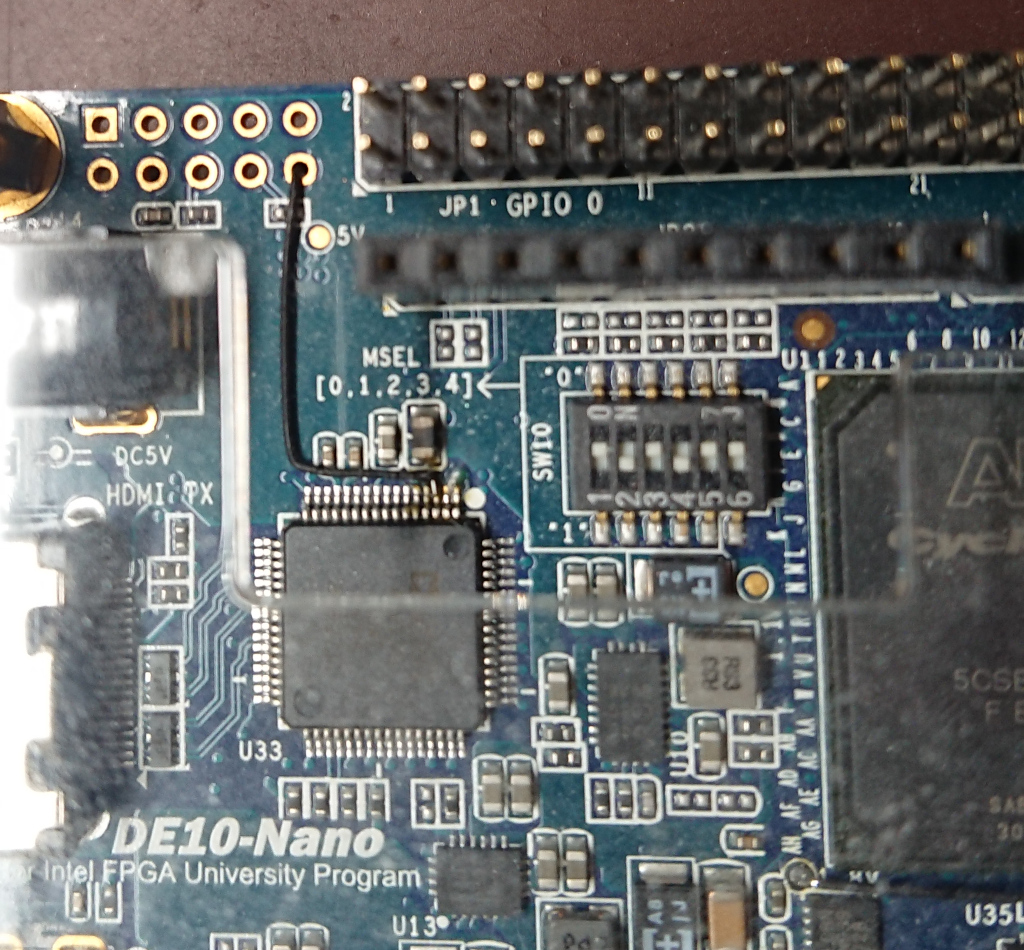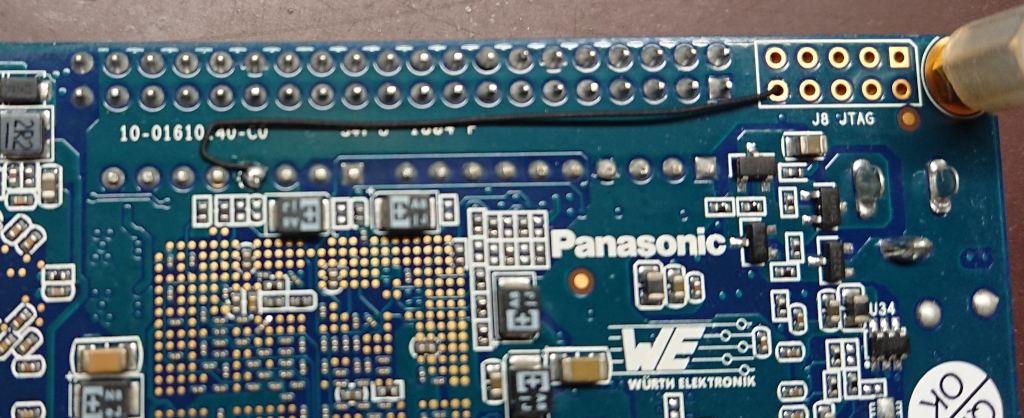- DE10-Nano has no series resistors between GPIO and FPGA (make sure JP1 is open)
- Uses GPIO0 block by default and Arduino header (D[7:4]) closest to FPGA
- GPIO1 can be used with FW from de10n_gpio1 branch (useful for people using a Mister RAM expansion on GPIO0)
- Uses Nios2 soft-CPU to be in line with other board adaptations
- TODO: evaluate if hard ARM core could be utilized with minimal configuration/code changes
- DE10-Nano user LEDs are too tightly packed and all same color so they are not much of use
- SPDIF input of ADV7513 is not connected (board can be modified to support SPDIF, see below)
- Due to booting from HPS, EPCQ flash is not accessible. Settings are stored on SD card
In order to enable SPDIF support, a small modification needs to be applied on DE10-Nano.
Connect one end of a ~10cm kynar wire to pin 3 of ADV7513 as shown below.
On bottom side of the PCB, connect other end of the wire to Arduino IO4/D4 pin.
Nios2 JTAG doesn't work with the default TCK frequency of the on-board USB-Blaster. Before SW download, open "Quartus Programmer -> Hardward Setup" and set the frequency to 6.5MHz.

